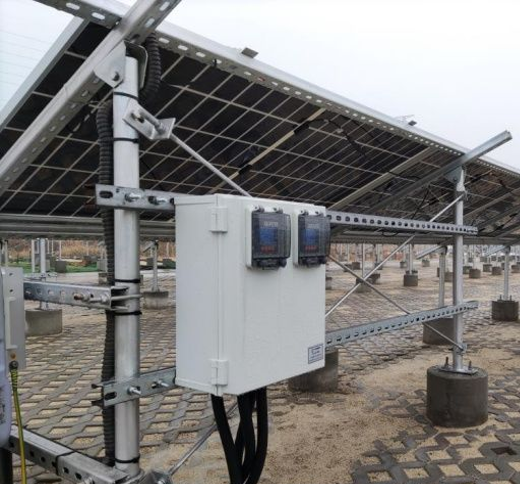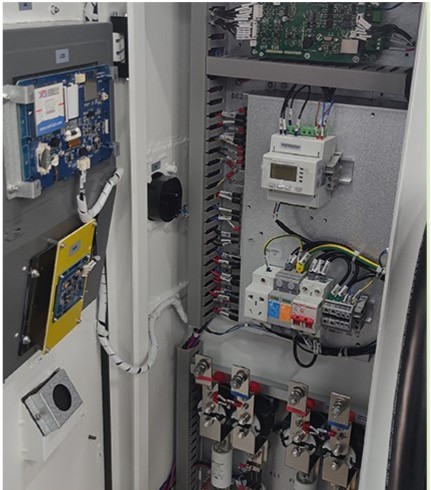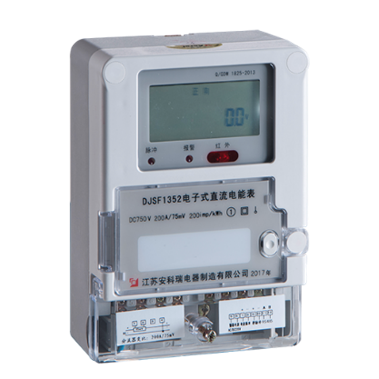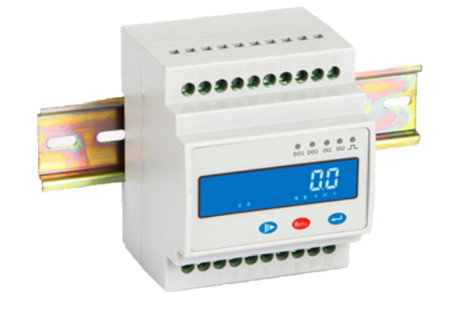1. Introduction: The Growing Demand for Electricity
In the modern world, electricity has become the backbone of daily life and industrial progress. With the rise of digitalization, smart technologies, and green energy solutions, the demand for more efficient, stable, and sustainable power sources is increasing. While AC energy has dominated the electricity sector for over a century, the growing need for DC energy is reshaping the energy landscape.
This shift is driven by renewable energy adoption, energy storage advancements, and the increasing reliance on electronic devices. As a result, DC energy is playing an increasingly significant role across generation, transmission, and consumption, providing an alternative to traditional AC systems.


figure1 solar photovotalic figure2 DC energy meter in DC charger
2. The Evolution of DC Energy Technology
DC energy was initially overshadowed by AC due to the ease of long-distance transmission. However, technological advancements have revived and expanded the application of DC energy across different stages of the energy system.
• Generation: Renewable sources such as solar photovoltaic (PV) panels, fuel cells, and batteries naturally generate DC energy. Even wind energy, which produces AC, often requires rectification to DC for efficient storage and distribution.
• Transmission & Distribution: High-Voltage Direct Current transmission technology enables more efficient, long-distance power delivery with lower losses compared to AC transmission.
• Consumption: Many modern electronic devices—including LED lighting, data centers, EVs, and industrial automation systems—operate on DC energy. The trend toward DC microgrids further reduces the need for constant AC-DC conversions, improving energy efficiency.
3. DC vs. AC: A Comparative Analysis
The increasing role of DC energy does not mean the elimination of AC but rather a shift towards a hybrid system where both AC and DC coexist and complement each other.
Feature | DC Energy | AC Energy |
Transmission Loss | Lower for long distances (HVDC) | Higher losses due to inductive reactance |
Conversion Efficiency | Fewer conversion steps needed for renewable energy & batteries | Requires AC-DC conversion for most modern devices |
System Stability | No synchronization issues, lower electromagnetic interference | Proneto frequency fluctuations and energy factor issues |
Applications | EVs, solar, data centers, microgrids, DC fast charging | General energy distribution, large industrial motors |
4. Applications of DC Energy
The growing adoption of DC energy is evident in multiple industries and applications:
Ⅰ. Renewable Energy Integration
• Solar PV systems generate DC electricity, which can be stored in batteries or supplied to DC loads with minimal conversion losses.
• Energy storage systems store DC electricity efficiently, supporting grid stability and backup power solutions.
Ⅱ. Electric Transportation
• EVs rely on DC power for charging and operation. High-power DC fast charging stations reduce charging time significantly.
• Railway and metro systems increasingly use DC traction energy to enhance efficiency.
Ⅲ. Data Centers and Industrial Applications
• Data centers, which house cloud computing and AI processing, benefit from DC energy distribution to improve reliability and energy efficiency.
• Industrial automation and smart factories are shifting to DC microgrids to reduce energy losses and improve control.
Ⅳ. DC Microgrids and Smart Grids
• DC microgrids provide localized energy distribution for residential, commercial, and industrial facilities.
• Future hybrid AC-DC smart grids will enable flexible energy management, improving energy resilience.
Ⅴ. Future Outlook
As the world transitions towards clean energy, electrification, and digitalization, DC energy will play an increasingly important role. The integration of DC microgrids, energy storage systems, and advanced energy electronics will drive the adoption of DC technology in various sectors.
While AC energy will continue to be the foundation of traditional power grids, the hybrid AC-DC power network will become the norm, optimizing energy efficiency and sustainability. Governments, industries, and researchers are investing in next-generation power systems that balance both technologies to meet future energy demands.
5. Applications of DC Energy Meter
DC energy has been widely applied across various industries. In certain applications, such as DC charging stations, photovoltaic energy storage systems, data centers, and microgrids, where transaction settlement, energy management, and regulatory requirements are involved, DC energy meters are essential for accurate measurement. In other words, the measurement results from DC energy meters directly impact transaction outcomes, energy management, and regulatory decisions. As the application of DC energy continues to expand, the importance of precise metering technology becomes increasingly evident.
Compared to AC, DC energy metering faces more challenges, including significant voltage fluctuations, bidirectional energy flow, and power quality monitoring. Since DC fast-charging stations and high-voltage DC transmission systems typically operate in high-voltage, high-current environments, even small measurement errors can accumulate over time, potentially leading to significant economic and operational impacts. Therefore, accurate energy measurement is crucial for fair billing, energy management, and regulatory compliance. Ensuring the precise measurement, regular calibration, and traceability of DC energy meters is an important prerequisite for the industry's development.


figure3 indirect access DC energy meter figure4 guide rail DC energy meter
Ⅰ. Ensuring Fair and Transparent Charging Fees
Inaccurate DC energy measurement can lead to:
• Overcharging customers, damaging user trust.
• Revenue losses for operators, affecting business profitability.
Governments and energy regulators are tightening certification and traceability requirements for DC energy meters to ensure transaction transparency.
Ⅱ. Adapting to Complex Environments and Enhancing Reliability
DC energy meters in charging stations face various operational challenges, including:
• High-voltage, high-current transmission requiring highly accurate and stable measurement devices.
• Fast charging involves frequent current fluctuations, demanding rapid response capabilities.
• Outdoor charging stations must operate reliably between -30°C and 50°C and withstand electromagnetic interference.
Regular calibration and traceability ensure that DC energy meters maintain accuracy under these challenging conditions, improving reliability and longevity.
Ⅲ. Optimizing Energy Management
In data centers and industrial sectors, precise energy metering helps optimize energy management. By monitoring energy consumption of devices, companies can identify areas of energy waste and optimize power usage to reduce operating costs. For example:
• Data centers can optimize load balancing and cooling strategies through accurate metering;
• Industrial systems ensure equipment runs in the optimal efficiency range, extending equipment lifespan, reducing energy waste, and meeting regulatory requirements to support sustainable development.
Ⅲ. Promoting the Development of DC Grids
With the rise of DC grids, precise energy metering and quality monitoring are crucial.
• In DC grids, accurate metering helps adjust load distribution during fluctuations or changes, ensuring stable grid operation.
• Energy quality monitoring provides real-time data on current fluctuations, harmonics, etc., ensuring the grid operates efficiently and safely, avoiding waste and supporting long-term sustainable development.
6.Conclusion
The rise of DC power is a response to the changing energy landscape driven by renewable energy, energy efficiency, and technological advancements. By integrating DC power into generation, transmission, and consumption systems, we can reduce energy losses, improve power quality, and support the global shift toward sustainable and intelligent power systems.
At the same time, accurate DC power measurement is becoming increasingly important to support energy billing, efficiency optimization, and system reliability. As DC technology continues to evolve, precision metering solutions will be essential for ensuring a transparent, efficient, and well-managed energy future.
In the next article, we will focus on how to achieve precise DE energy measurement and introduce TUNKIA's newly upgraded and advanced DC energy metering solution. If you are interested, please continue to follow us or contact us derictly.














